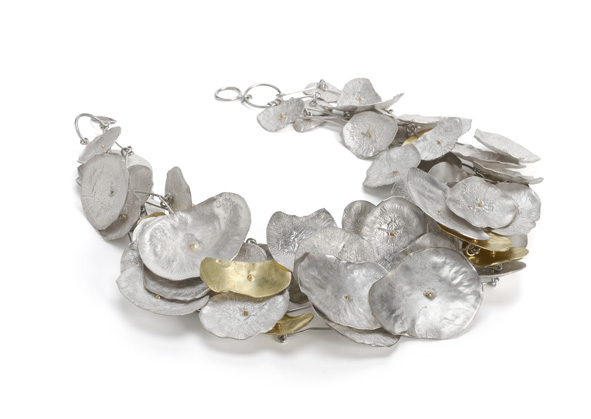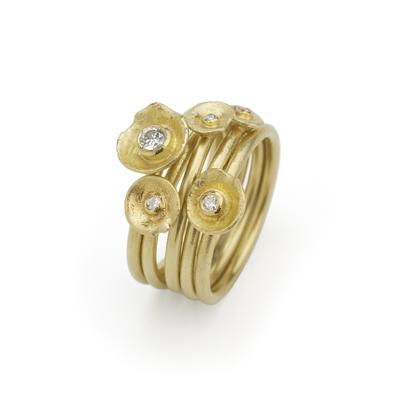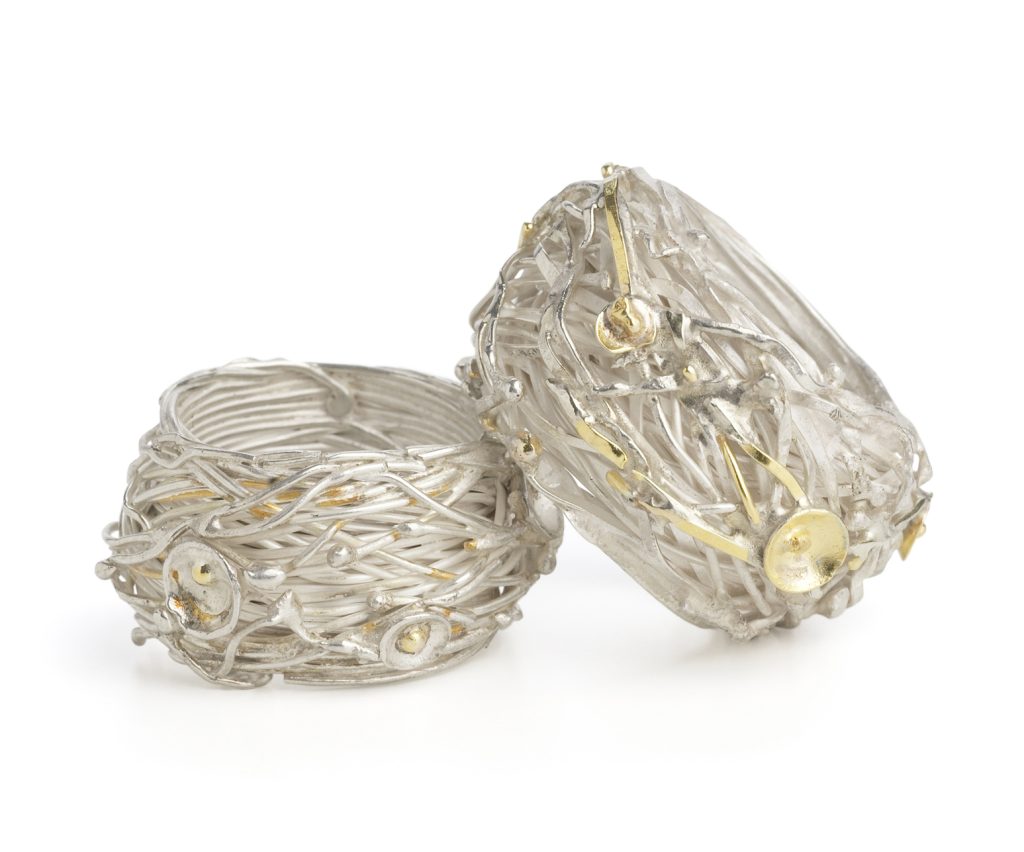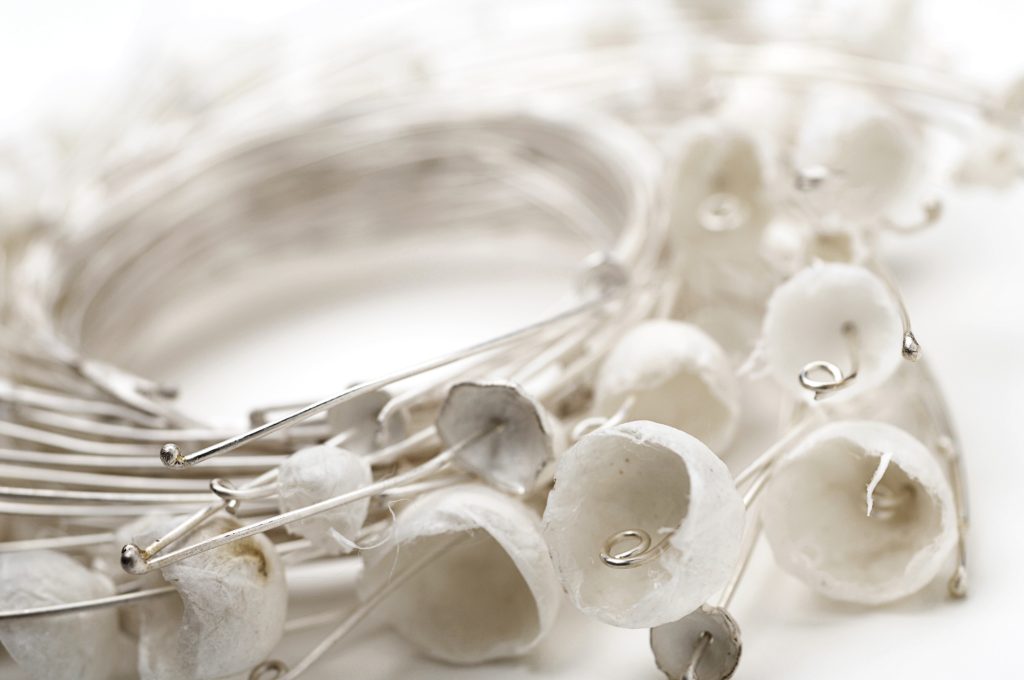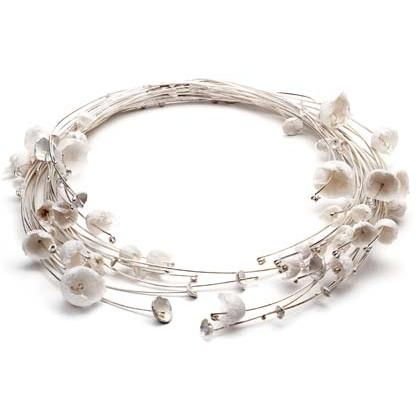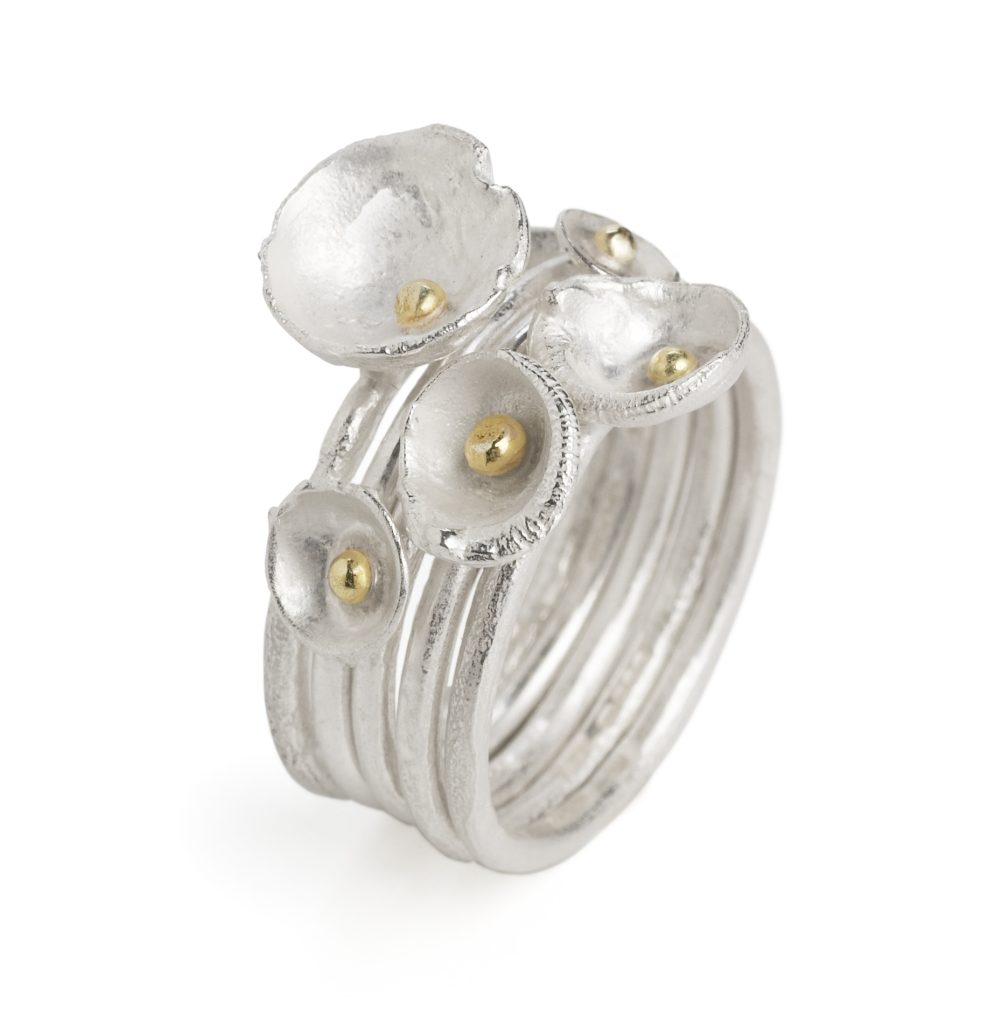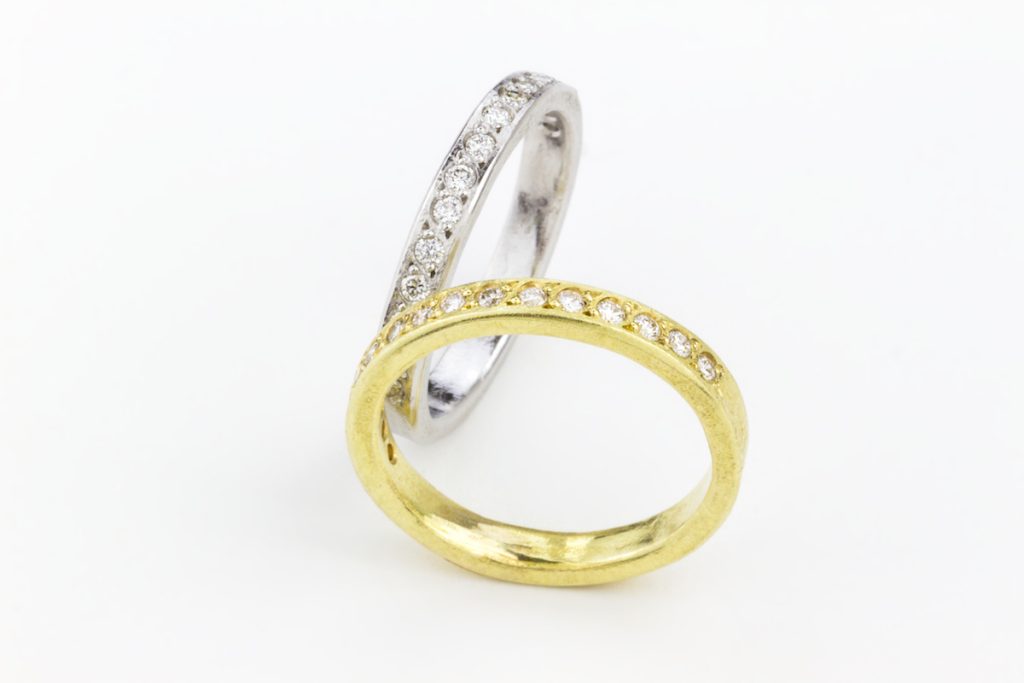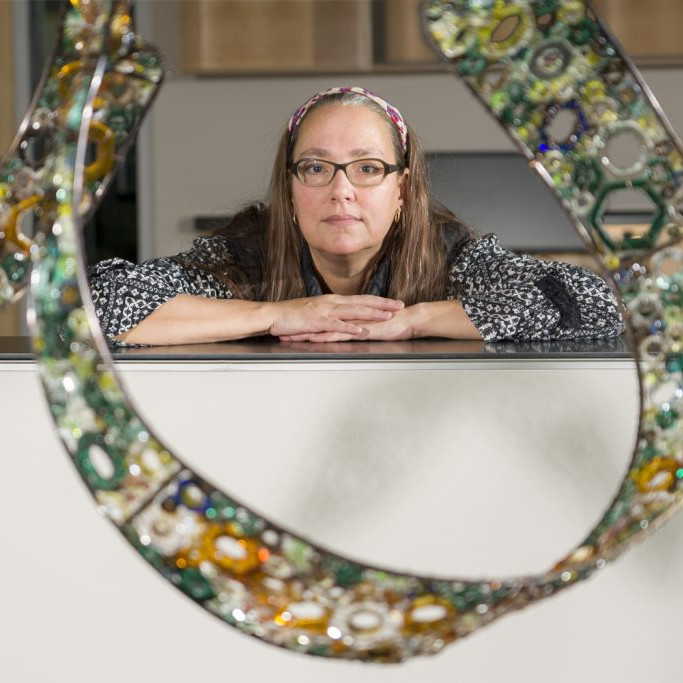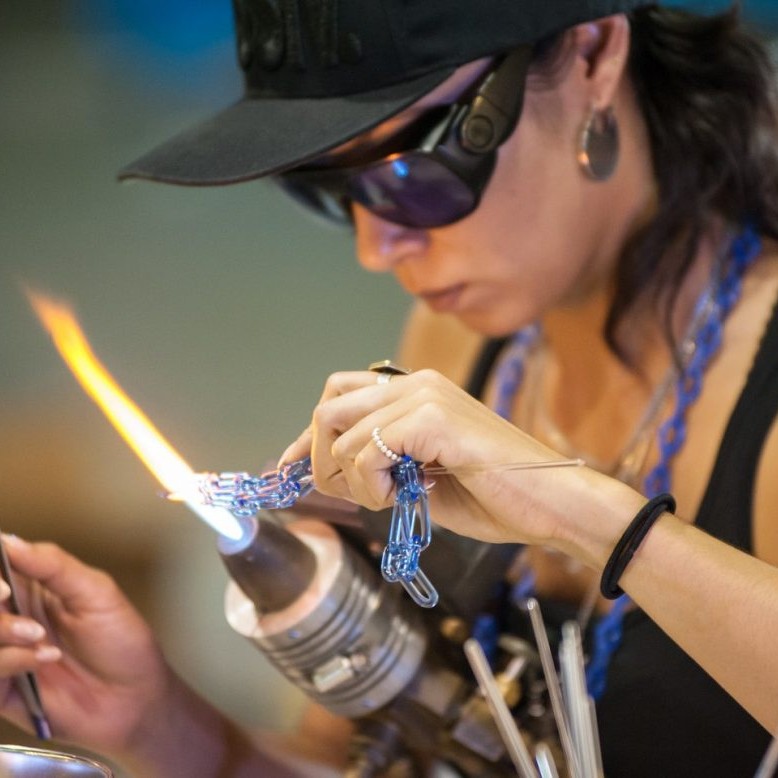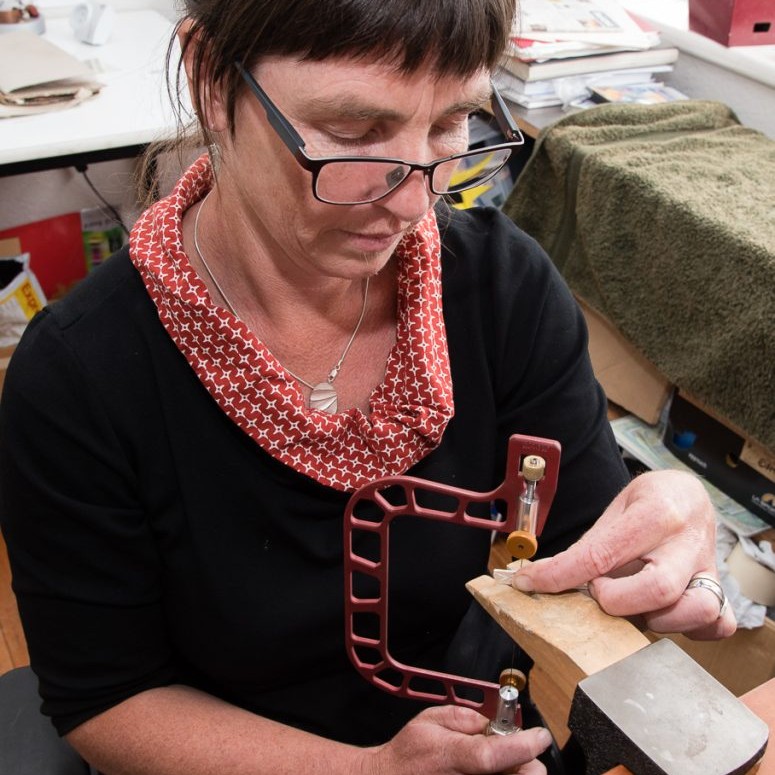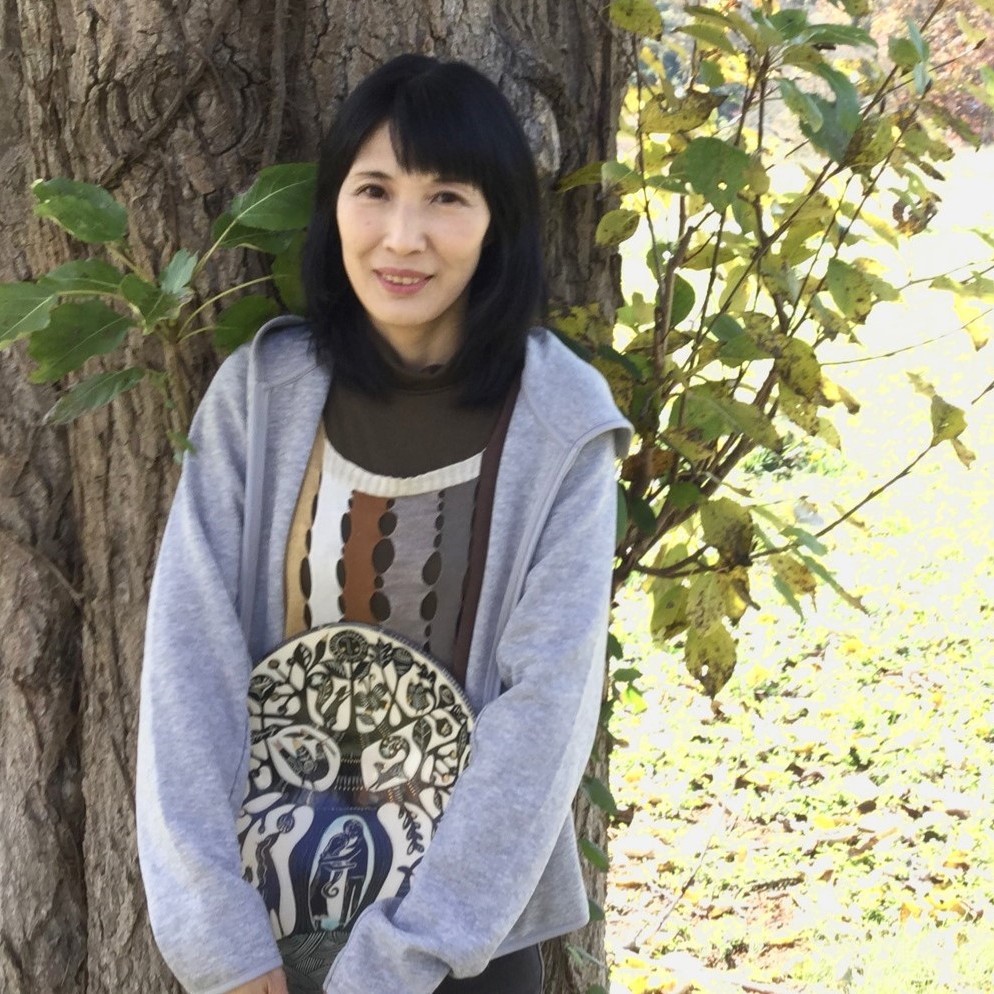Shimara Carlow Jeweller - Melbourne,Australia
Can you expand on your relationship to nature and in particular seed pods in your jewellery?
While studying at Glasgow School of Art in Scotland, our lecturers encouraged keeping a sketch book or scrap book, I went to what I knew, nature, and spent hours collecting, photographing and drawing found objects to fill these books.
I loved the simple forms and shapes created by nature, and the idea of seed pods, holding something precious, always resonated with me.
It was then a very natural process for this to heavily influence my work.
How has nature become such a huge part of all your collections?
I have always spent a lot of time outside foraging and collecting seedpods, shells, feathers and leaves as a child and as an art student. Going on long walks through the countryside and along the beaches in Scotland and Ireland, where I grew up. Or pottering around my mother’s garden or national trust gardens – I was never looking where I was going, always looking at small details instead.
Now with my own children, we spend most of our time out in the garden or walking along the waterfront – I am always outside!
Take two or three pieces to expand on the natural influences.
My Acorn cup design is the earliest – I first developed this at Art School, it is as simple as I was trying to recreate an acorn cup out of silver, without casting an actual acorn cup!
My Honesty collection is my response to the beautiful and delicate dried seed pods of the honesty plant, which grew all around our garden. I loved the silvery seed pods which hang in clusters from the plant. Using reticulation and acid to bring the silver to a white silver colour I have tried to recreate my initial response to the plant.
The Gum nut range is one of the few where I have cast direct from nature, I collected the original gum nuts on my first visit to Australia in 2006, while visiting Adelaide. I could not believe all the beautiful shapes and forms; they are so different from the seed pods back in the UK.
How influenced is your work with your childhood in Ireland and education in the UK?
Completely! I grew up on a rugged mountainside overlooking the Atlantic Ocean, we lived in a small cottage, surrounded by nature, and often at the mercy of the elements. We didn’t have tv I don’t remember many toys, we were outside exploring the mountains, or the peat bogs or the coastline, in all weather.
I went to an alternative School in Scotland, Kilquhanity House School, it was based on Steiner principles. So much of our education took place outside, the school was on a huge grounds in the country. The school was very arts focused with children of all ages taking woodwork, ceramic and art classes on a daily basis.
Your connections with the UK are still very strong as you have galleries in both hemispheres. Discuss how you keep both operating.
I had set up a good business while living in London, and I really didn’t want to give it up! I took part in trade shows and art fairs, and built good solid relationships with UK galleries which I was able to maintain when I moved to Australia. I guess because I make it easy for the galleries to have my work they are happy to keep me. My mum also runs a gallery in Scotland, I think having a UK base helps.
You currently work out Studio space in Melbourne discuss this.
I left the convent in 2014 when we moved the Western Suburbs, I converted the garage in our garden and work from there. It is a wonderful set up and allows me to be a full time mum and full time artist!
I like to keep my studio and exhibiting spaces separate, so don’t show work in my studio, but welcome clients to come meet me and discuss one off pieces and commissions.
You also work on larger pieces, bowls. Explain the work involve in these pieces.
My silver smithing work is very labour intensive, and as such I don’t get much of an opportunity to do it these days, I have also found there is very little market for it here in Australia, and I predominantly sell it in the UK.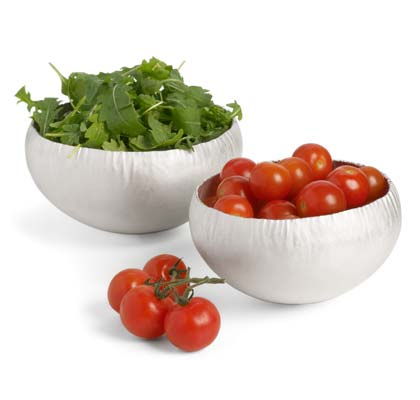
My pieces are hand raised from plat sheets of fine silver, the process is very slow and physically challenging. Using a hammer and metal stake (former) I hammer the sheet over the stake in a circular motion, from the middle to the edge, taking it slowly from flat to domed, after each round the metal is annealed (heated until soft again, as it harden as you work it) left to cool and repeated, somewhere between 10 and 100 times depending on the piece.
Expand on the combination of metals (e.g. e Acorn Cup rings) and the use of both gold and silver.
I started incorporating 18ct yellow gold into my silver jewellery to add contrast, but also to add warmth. The gold beads in the centre of many of my designs, goes back to the theme of seeds and seed pods, or pearls in oysters.
In your larger pieces – neckpieces, you create a delicacy discuss the combination of metal and silk paper.
Taking the idea of layers of leaves and petals, or the woven forms of nests, I like to explore juxtaposition of the fragility and strength found in nature.
Can you expand on the use of silk paper in your jewellery?
I loved the versatility of the silk paper, which I moulded, using papier Mache technique. It allowed me to create form and shapes I could not achieve with metal.
Being a natural material it worked well with my designs, and in my endless pursuit of recreating nature, brought a delicacy to large sculptural pieces.
Discuss the process of your wrapped rings and the different sizes that you need to make so that they are just right for each wearer.
My Wrapped rings are formed from long lengths of hammered metal wire, bound in a nest like design. They are then soldered together so they can’t unravel. I make them 2-3 sizes smaller than I want them and once finished stretch them up on a ring stretch to make them tight and strong. In this way they can be made to fit any size, although the very small sizes are challenging!
You do commissions can you tell us of one that was different and lead you to a new idea?
The most recent one that comes to mind, was for a good friend who was proposing to his girlfriend. He wanted to buy a piece from me, I knew my style was not her thing, and so I designed and made a much more traditional engagement ring than I had ever made before.
I am now bringing out a whole range of wedding,engagement and eternity rings. They have a traditional look, but a tactile organic feel, achieved through textured hammers and a wonderful stone setter!
Contact details
Shimara Carlow
Shimara, Melbourne,Australia
Interview by Deborah Blakeley, February, 2017
Think a colleague or friend could benefit from this interview?
Knowledge is one of the biggest assets in any business. So why not forward this on to your friends and colleagues so they too can start taking advantage of the insightful information the artist has given?
Other artists you may be interested in:




